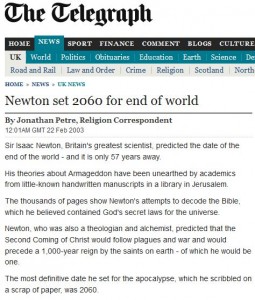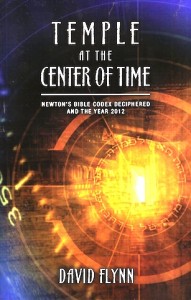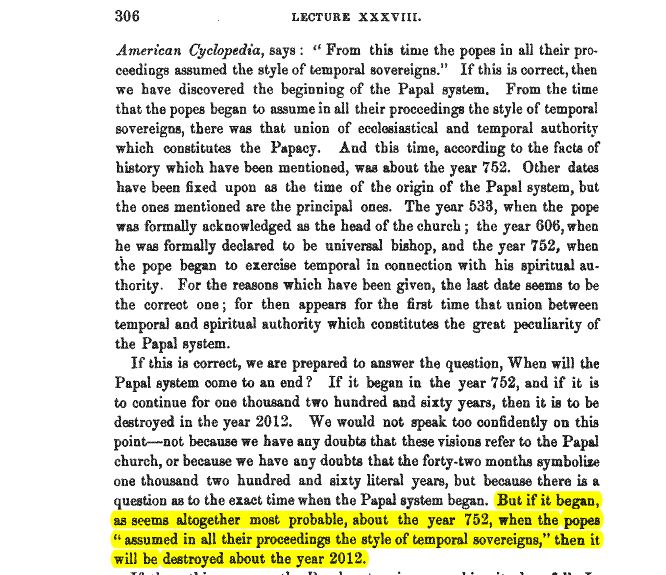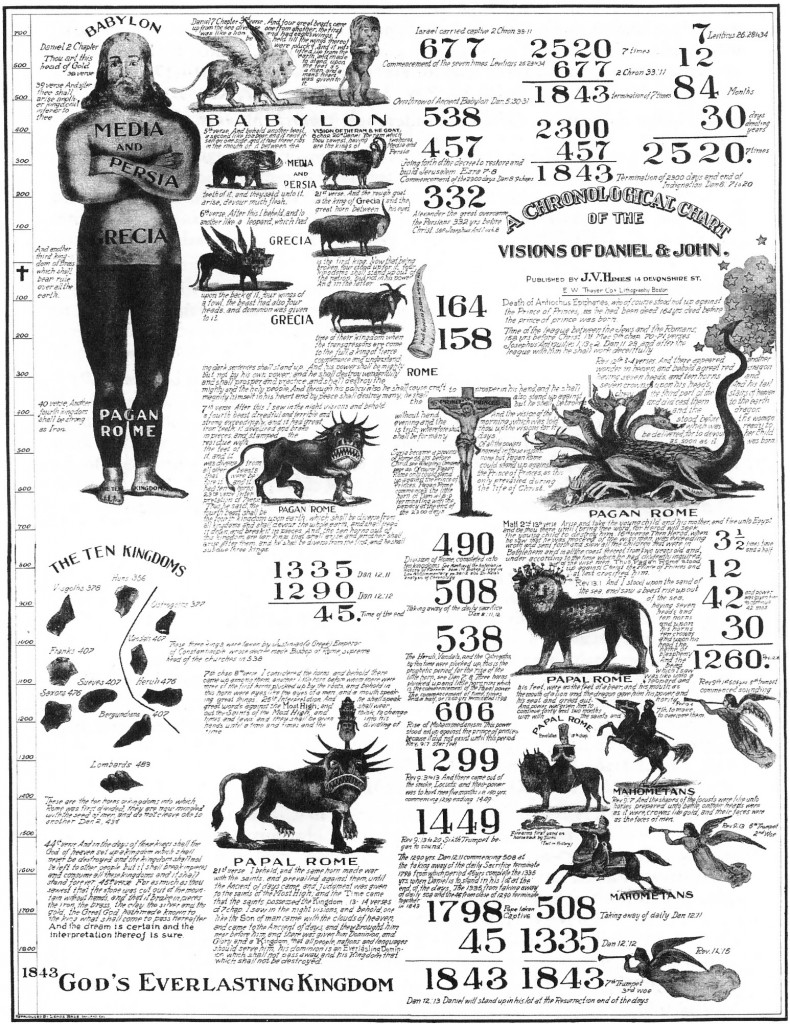By Cris D. Putnam
 The idea that the pope or office of the papacy is the biblical Antichrist offends modern sensibility. Contemporary culture elevates political correctness as a cardinal virtue albeit many of its staunchest proponents are intolerant of those who advocate objective truth. It seems pluralism rules the day in religious discourse. Even in evangelical circles, ecumenism disavows such an idea. However, protestant tradition is not politically correct. The purpose of this series is to survey the history of the notion that the papacy fulfills the prophetic descriptions of Antichrist and to follow the data where it leads. This presentation will first give a broad overview and summary of the biblical data and then it will offer a sampling of significant Protestants who have contended for the idea. Two noteworthy proponents, Francis Turretin and Charles Hodge, will be discussed more thoroughly. Finally, a brief discussion will be offered on contemporary responses and conclusions will be drawn. While the argument that the papacy fulfills the prophecies of the Antichrist is sound and compelling, it seems unwarranted to conclude that it does so exclusively.
The idea that the pope or office of the papacy is the biblical Antichrist offends modern sensibility. Contemporary culture elevates political correctness as a cardinal virtue albeit many of its staunchest proponents are intolerant of those who advocate objective truth. It seems pluralism rules the day in religious discourse. Even in evangelical circles, ecumenism disavows such an idea. However, protestant tradition is not politically correct. The purpose of this series is to survey the history of the notion that the papacy fulfills the prophetic descriptions of Antichrist and to follow the data where it leads. This presentation will first give a broad overview and summary of the biblical data and then it will offer a sampling of significant Protestants who have contended for the idea. Two noteworthy proponents, Francis Turretin and Charles Hodge, will be discussed more thoroughly. Finally, a brief discussion will be offered on contemporary responses and conclusions will be drawn. While the argument that the papacy fulfills the prophecies of the Antichrist is sound and compelling, it seems unwarranted to conclude that it does so exclusively.
The Antichrist in Prophecy
The concept of antichrist traces back to Israelite history where Israel as the chosen people of God were threatened or opposed by a pagan Kings. For example, concerning the Babylonian King, Isaiah writes, “You said in your heart, ‘I will ascend to heaven; above the stars of God I will set my throne on high; I will sit on the mount of assembly in the far reaches of the north” (Is 14:13). Ezekiel paints a similar portrait of the King of Tyre (28:2) and Gog of Magog (38-39). This self-proclaimed apotheosis is also found in the “little horn” of Daniel 7 and 8. Even more, it is seen in Daniel 11:36-37. Antiochus IV Epiphanes who desecrated the second temple typifies the eschatological figure and the infamous “abomination of desolation” is seemingly spoken of as future event by Jesus (Mt 24:15). This deified tyrant figure appears in the New Testament in Paul’s description of the “man of lawlessness” who “proclaims himself to be God” (2 Th 2:4). In John’s Apocalypse, he is the beast from the abyss whose image is idolatrously worshipped (13:1-18). In Mark 13:22, Jesus warns near the time of his return that false Christs (pseudochristoi) and false prophets (pseudoprophētai) will deceive people by doing signs and wonders (cf. Matt 7:15; 24:11, 23–24). These texts form a composite picture from which scholars and expositors have formed a model of who this is and how he might manifest.
The Greek term antichristos can be taken two ways as “opponent of Christ” or as “false Christ.” This is due to the twofold meaning of the prefix “anti.” It can mean “against” or “instead of.”[1] It is only used explicitly in 1 John 2:18.22; 4:3; 2 John 7, and in other apocryphal Christian literature. If we look to John’s epistles we see that antichrist is defined as “he who denies the Father and the Son” (1 Jn 2:22b). This meets the “against” sense the prefix “anti.” Yet, John also seems to distinguish between a single Antichrist “who is coming” and a plural “many antichrists who have come,” (1 Jn 2:18). Leon Morris offers, “Perhaps we should bear in mind that John refers to ‘the spirit of the antichrist’ as well as ‘the Antichrist’ (thus using both neuter and masculine); indeed, he refers to ‘many antichrists’ in whom that spirit finds expression (1 John 4:3; 2:18).”[2] Thus, it seems prudent to be flexible in one’s view. Even so, in 2 Thessalonians 2, Paul’s use of: 1) “man of lawlessness;”2) ” son of destruction;”3)”he who opposes and exalts himself;”4) “he whose coming is after the working of Satan” points to a single individual. Due to this and because Jesus is described as defeating an individual (cf. 2 Th 2:8; Re 19:20), one should understand the general term “antichrist” as many individuals culminating with an ultimate incarnation, “the Antichrist,” just prior to the Parousia.
Most interpreters conflate the two meanings of “anti” with a figure who poses as Christ while initially clandestinely opposing God in allegiance with Satan. This portrait of a deceptive usurper is well supported by the above mentioned passages. Yet, the futurist interpretation has not been the dominant view of the Apocalypse historically. Since the reformation, there has been a large body of biblical scholarship which posits the events in the book of Revelation as milestones along church history. We believe that this approach has merit and will suggest a hybrid of futurist and historical interpretation. While speculations on the identity of Antichrist have run the gamut from Muhammad to President Obama, arguably, until very recently, the dominant opinion since the reformation has been the Roman Catholic pope albeit not a single pope rather the office of the papacy. Even though strictly historical interpretations seem inadequate, a hybrid of historical with a still yet ultimate realization of “the Antichrist” offers more promise. Nevertheless, it is demonstrable that from the time of Luther to the present day, there has been a consistent and compelling argument that the office of the papacy fulfills the prophetic type of antichrist.
[1] L. J. Lietaert Peerbolte, “Antichrist.” in Dictionary of Deities and Demons in the Bible. 2nd extensively rev. ed. K. van der Toorn, Bob Becking and Pieter Willem van der Horst (Leiden; Boston; Grand Rapids, Mich.: Brill; Eerdmans, 1999), 62.
[2]Leon Morris, vol. 13, 1 and 2 Thessalonians: An Introduction and Commentary, Tyndale New Testament Commentaries (Downers Grove, IL: InterVarsity Press, 1984), 129.











